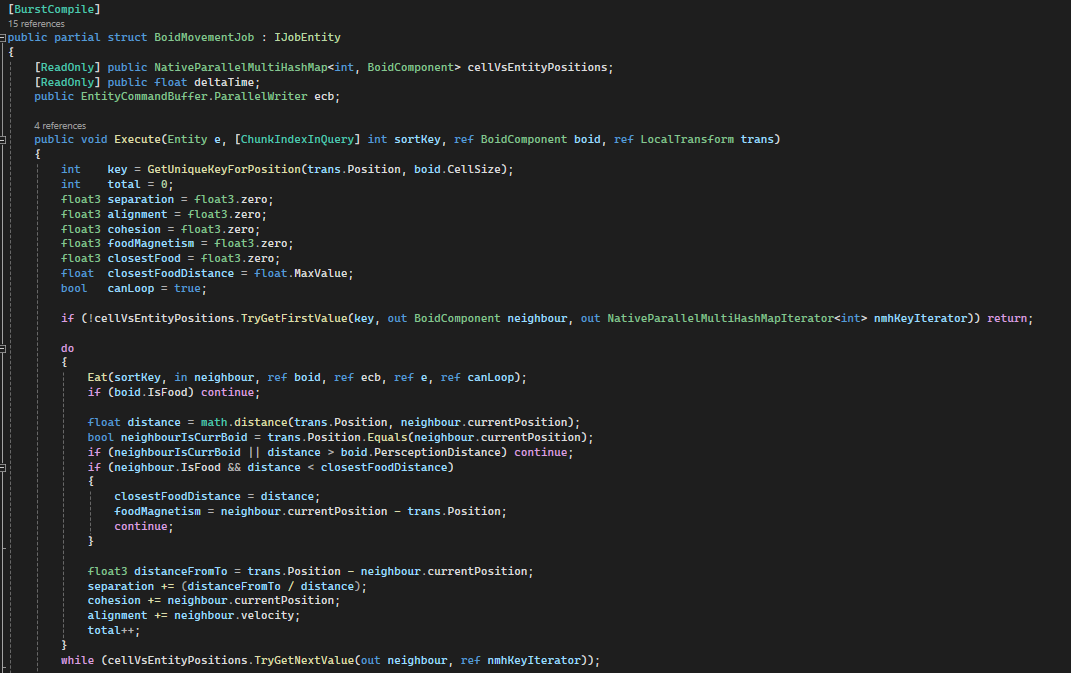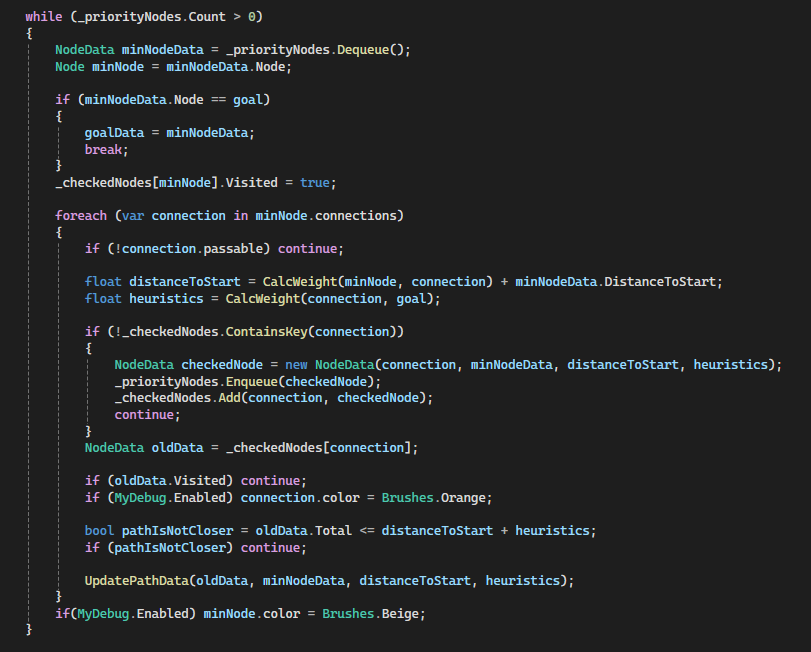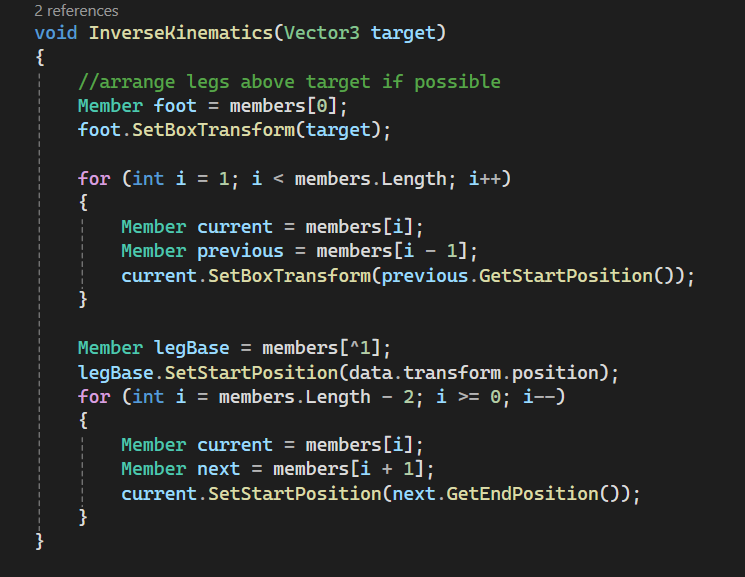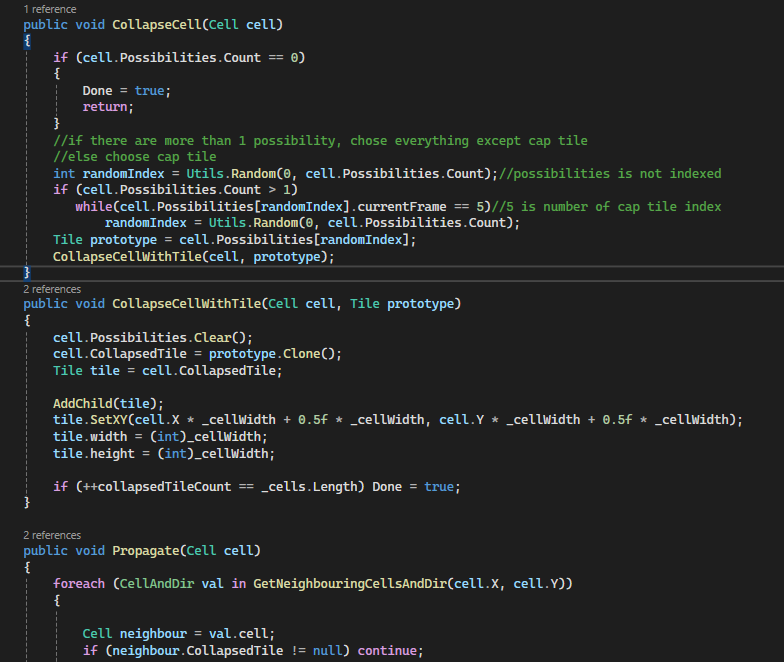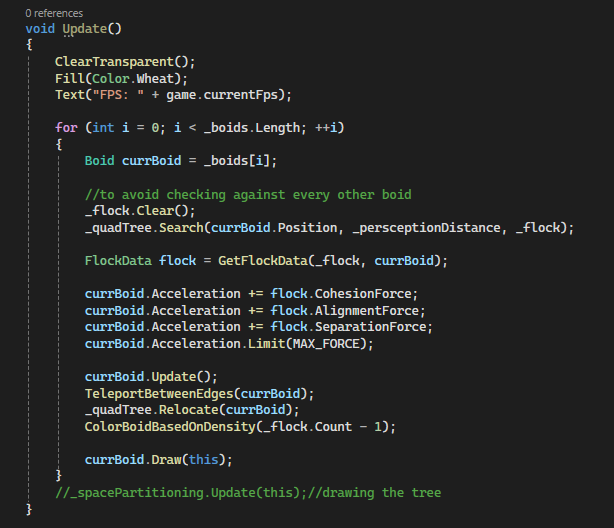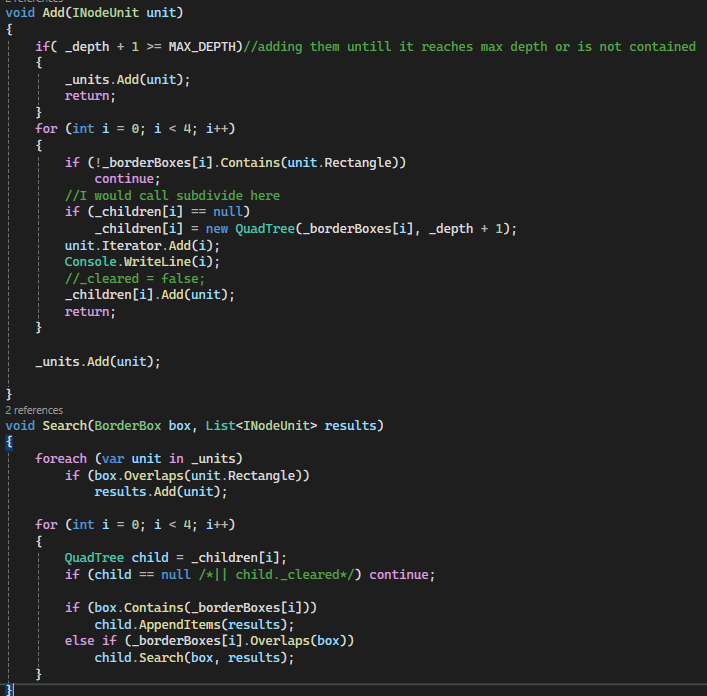Unity DOTS and BOIDS
Description
Because the Unity Data Oriented Technology Stack was released, I decided to learn it by doing a project. I use the
earlier learned Boids Algorithm as the problem to optimize. However, this time
I use an easier space partitioning algorithm, so I can focus more on how DOTS works. The way it works is that a region in
space has its hash code that is used as a key in a HashTable. The limitation is that boids interact only in the bounds of a
particular cell and not in their respective perception radius.
The main challenge I encountered was to find the right documentation to learn from. Many tutorials use deprecated
functions and even workflows.
Time spent:
4 days